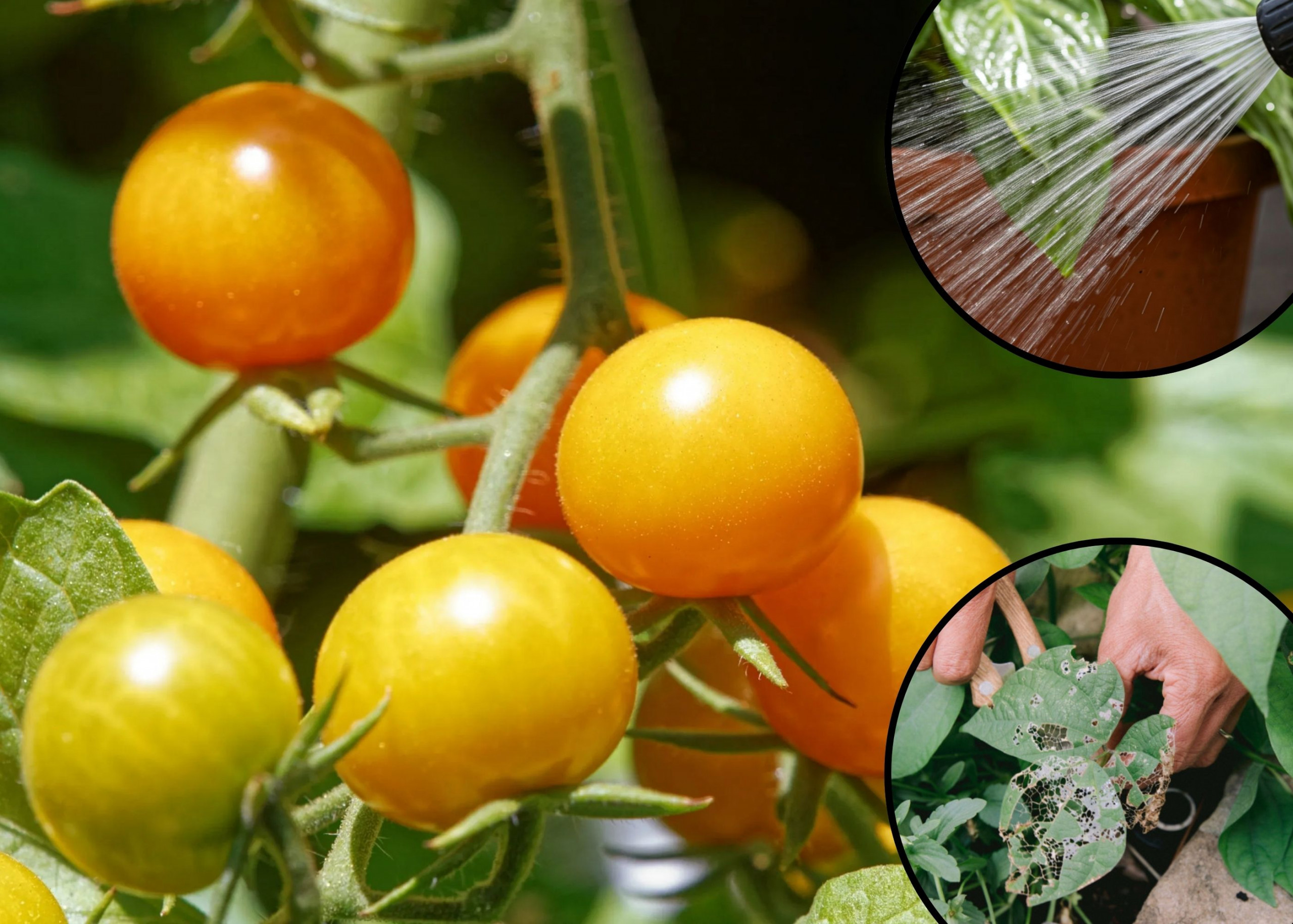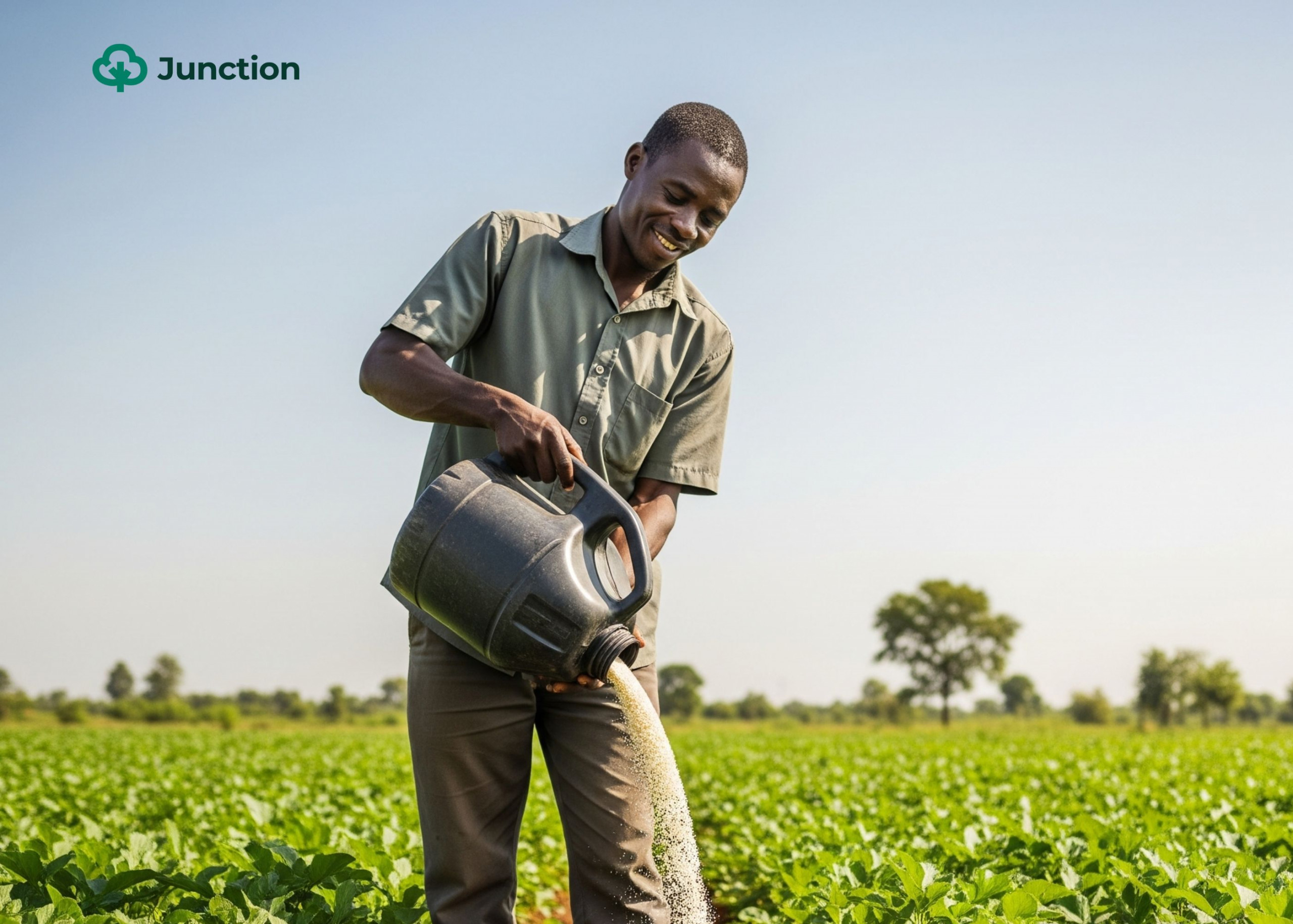Tomatoes feature prominently in many Nigerian meals because of dietary habits that revolves around staples. Popular staples like rice, yam, garri and bread are best enjoyed alongside stews or sauces made with tomato.
This dependence on the vegetable makes it an essential food item with unexpected scarcity and hikes in price causing nationwide problems like have been happening seasonally in recent years. For example, the tomato ebola of 2023 led to outrageous 400% increase in costs.
While diversity is important to live an enjoyable life, you can also reduce your dependence on market tomato supply by growing them in your garden. Even in cases where there isn’t empty patches of land to start a small farm, you can make use of pots to grow your own tomatoes.
Home garden owners have faced the challenge of growing enough tomatoes to match their needs. Many find that they still need to buy the vegetable from time to time because they cannot grow enough for them and their families.
Perhaps, the issue is the way that they approach their gardening. Typically, many treat their ‘backyard’ farms or pot gardens as a hobby, and fail to adopt practices that a farmer targeting sales would take up.
Below, you will see five ways you can boost the yield of tomatoes in your garden and rectify mistakes that other hobbysist commonly make.
Five ways to boost tomato yield in your garden
- Sunlight:
Tomatoes grow well when the plants receive at least eight hours of direct sunlight. When the plants fail to receive enough sunlight, they become leggy and weak, with signs like sparse foliage and fewer blossoms. This leads to reduced fruit production or even the complete failure of the plant to produce any. Conversely, tomatoes which get ample sunlight tend to be more vigorous, showing thicker stems, larger leaves, and a higher yield of delicious fruit.

If you have limited open space and have to grow tomatoes in pots, this may be a challenge. To ensure your tomatoes receive optimal sunlight, choose a sunny location in your garden or place pot plants on a south-facing windowsill. Also, avoid planting tomatoes in areas that are shaded by trees, buildings, or other structures. By providing your tomatoes with the sunlight they need, you can significantly improve their growth and productivity.
2. Well-Draining Soil:
Another key requirement for tomatoes to thrive is growing in a well-draining soil. What this means is a type of soil which allows excess water to leave quickly, preventing root rot and other fungal diseases. Soil that is too heavy or compacted, like fine clay particles, can retain too much moisture, leading to unhealthy roots and stunted growth.
To create a well-draining soil, you will need to add compost, manure, or other organic materials into it to improve its structure, aeration, and water-holding capacity. These amendments also provide essential nutrients that tomatoes need for healthy growth and development.
If you are using pots, there is the advantage of making the kind of soil you want and you can create drainage holes to allow excess water to escape. However, if you are using a piece of land, remember to avoid areas that are prone to waterlogging. Intead, prioritise locations that have good drainage, such as raised beds or slopes.
3. Proper Watering:
Watering tomatoes correctly is an essential ingredient for their growth and development. While it may seem strange, overwatering can be just as harmful as underwatering. Tomatoes prefer to be watered deeply and infrequently, so the smart thing to do is to allow the soil to dry out slightly between waterings. This encourages deep root growth, which helps plants withstand drought and access nutrients more effectively.
When watering tomatoes, soak the soil thoroughly until water begins to drain from the bottom of the pot or garden bed, which is why the previous tip is essential. Avoid shallow watering, as this can lead to shallow roots and make plants more prone to stress. While allowing the soil to dry out slightly, don’t let it become completely parched before your next watering.
Take note that watering frequency depends on the temperature, humidity, and soil type. Agronomists advise that you should water tomatoes every 1-2 days during hot, dry weather and less frequently during cooler, wetter periods.
4. Support:
As tomato plants grow and especially when they begin fruiting, they can become heavy at the top, making them susceptible to toppling over. Providing support for your tomato plants is essential to prevent damage and ensure optimal growth.
There are many ways to support tomato plants. One common approach is to use stakes. Insert a sturdy stake into the ground near the base of the plant and tie the stem to the stake with twine or garden ties. As the plant grows, continue to tie it to the stake to provide additional support.

Another popular method is to use tomato cages. These cages are made of wire or plastic and provide a framework for the plant to grow. Simply place the cage around the base of the plant and allow the stems to climb up the sides. Tomato cages offer excellent support and can also help to repel pests if you are using an open farm.
5. Pest and Disease Control:
Tomatoes are susceptible to a several pests and diseases that can significantly impact their growth and yield. Regularly monitor your plants to detect early signs of problems and take prompt action.
Common tomato pests include aphids, tomato hornworms, tuta absoluta (moths) and Colorado potato beetles. These pests can damage leaves, stems, and fruit, reducing plant vigour and productivity. Diseases such as blight, wilt, and mosaic virus can also affect tomatoes, causing symptoms such as yellowing leaves, stunted growth, and rotting fruit.
To control pests and diseases, consider using organic methods if your aim is an end-to-end organic product. Organic pest control options include insecticidal soap, neem oil, and beneficial insects. Companion planting can also help to deter pests. For example, planting basil, marigolds, or garlic near your tomatoes can repel some harmful insects.
Conclusion
Take advantage of common agronomy practices to ensure that you are getting the best out of your tomato planting venture.
By providing your tomatoes with the sunlight they need, you can significantly improve their growth and productivity. A well-draining soil creates a healthy environment for their roots to grow and develop, leading to higher yields and better-tasting fruit. Proper watering can help it develop healthy roots. Sturdy supports can help them grow taller and stronger, leading to a higher yield of delicious fruit while reducing the likelihood of damage by wind or heavy rain. Taking proactive steps to prevent and control pests and diseases can protect the plants.
Since the typical time to harvest tomatoes is between 60 and 100 days after transplanting seedlings and 100 and 120 days after planting the seeds, you can grow this vegetable up to three times a year. Thus, you can fill your own needs if you farm smartly. It is expected that an acre will yield 18 to 25 tonnes of tomatoes.



